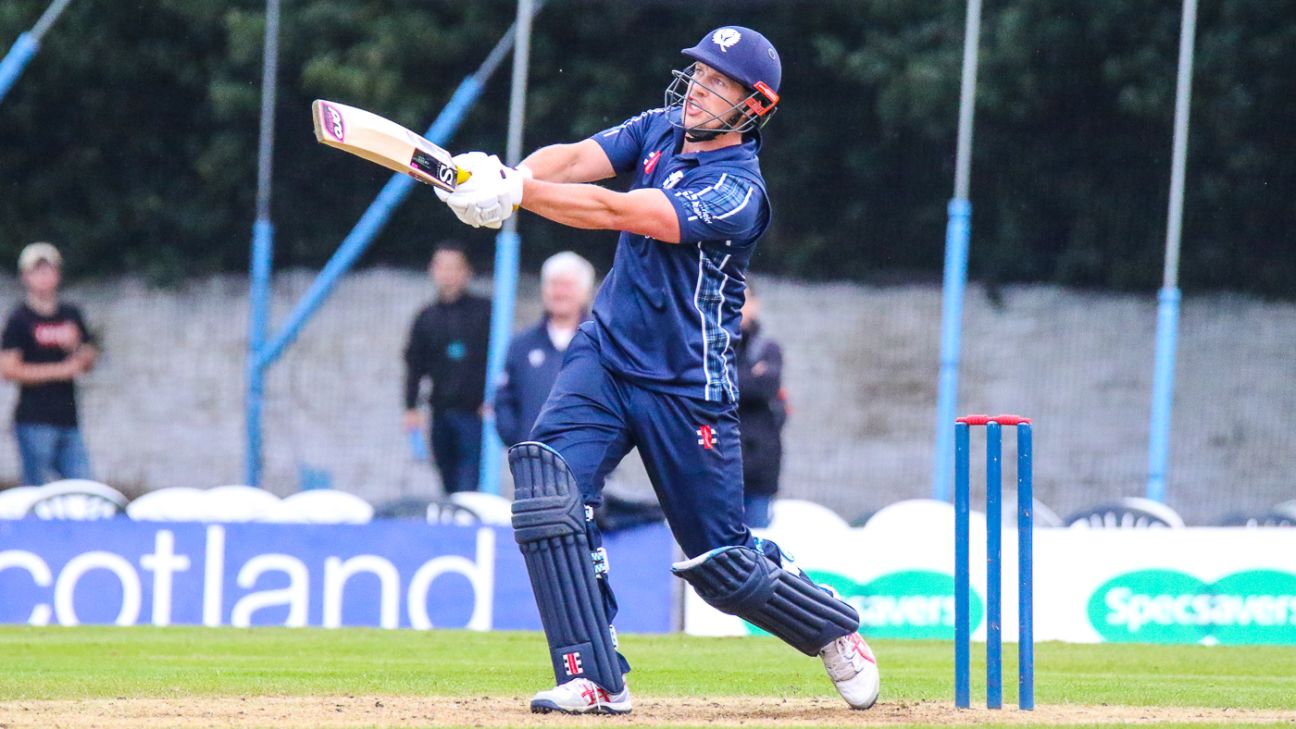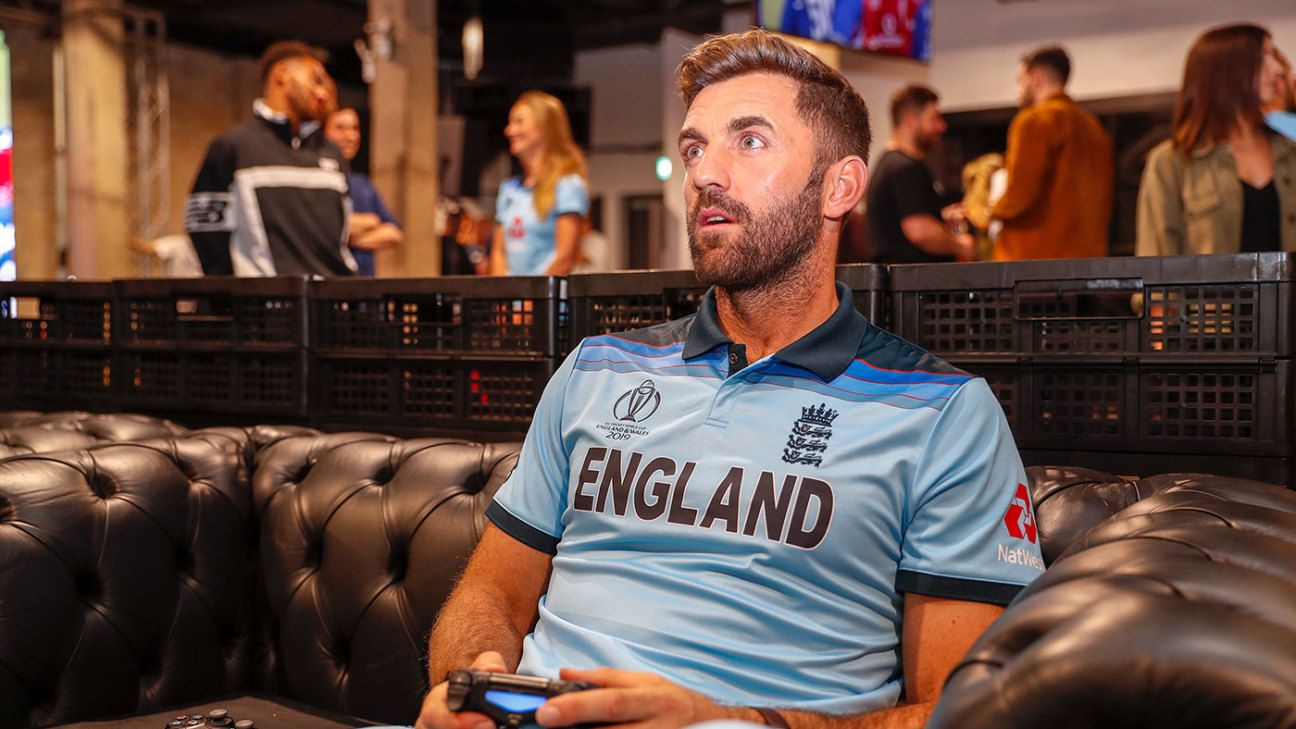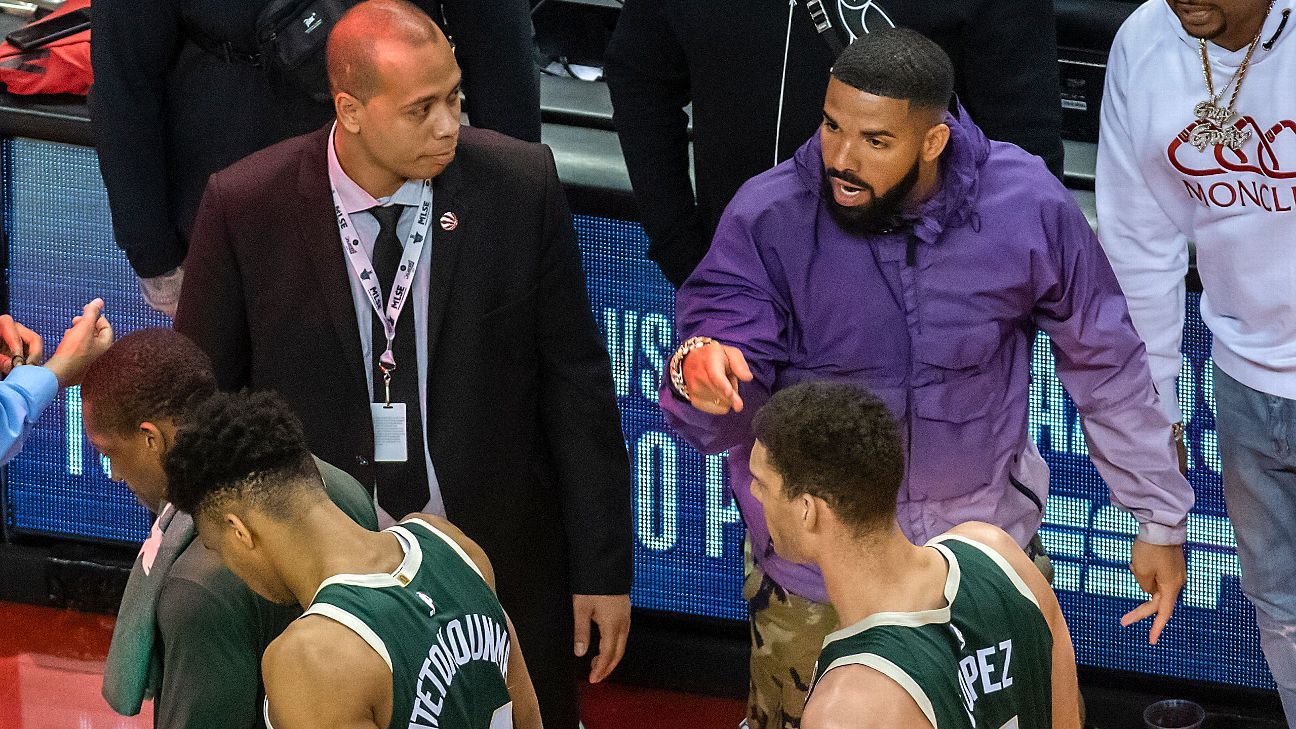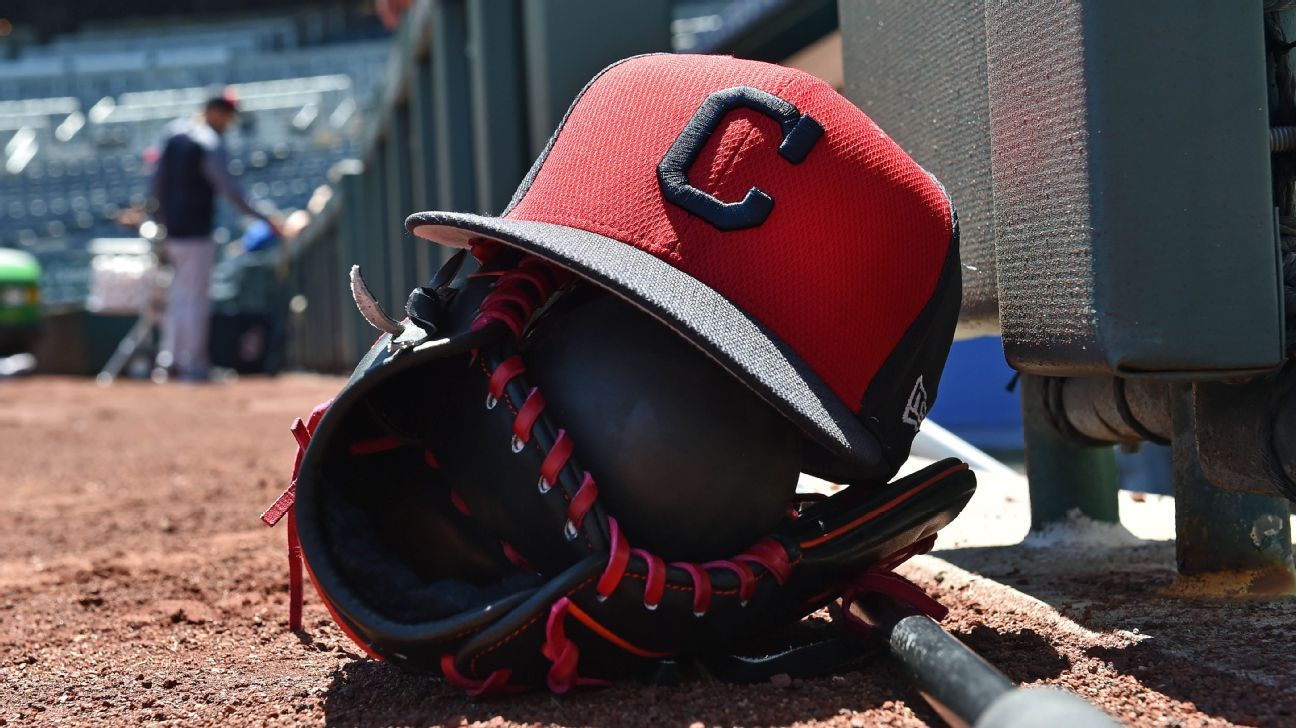I Dig Sports
George Munsey 'gutted' despite career-best innings after Scotland fall short
Published in
Cricket
Wednesday, 22 May 2019 06:47

In a Scotland batting unit featuring the reigning ICC Associate Player of the Year, Calum MacLeod, and a captain who earlier in the month had became the fastest Associate cricketer to 2000 ODI runs, Kyle Coetzer (in 49 innings), the most menacing threat to opposition bowling attacks might actually sit a bit lower down the order. George Munsey's destructive batting has had him firmly entrenched in the opening slot in T20 cricket for Scotland, but in ODIs he slots in lower down as a finisher.
On Tuesday against Sri Lanka at the Grange, the scene was set for Munsey to showcase his rapidly growing reputation as a power-hitter. A flurry of sweeps and reverse sweeps had taken him to 23 off 24 balls before rain transformed Scotland's equation from 191 off 138 balls (8.30 per over), to 103 off 42 (14.71). Yet, Munsey says the situation was well within Scotland's grasp in a match that eventually ended in Sri Lanka winning by 35 runs.
"I was really positive actually," Munsey told ESPNcricinfo after the match, when asked about Scotland's chances as he walked out for the resumption of the chase. "I think with our firepower at the back end, these totals are not un-gettable.
"We've got quite a strong hitting line-up at the tail and the belief in the team was we really have a great chance of getting this, especially if we have a good start and really go hard from ball one. We almost did that. One more over early on with a good over would have really put us in a great place. We lost a few too many wickets in the end but we weren't far off chasing it down."
Scotland got that good over straight after the restart. Munsey struck Thisara Perera's first ball for six over the leg side before clipping two more boundaries in a 19-run 28th over to keep the equation in check. A six off Suranga Lakmal as part of an 18-run 31st over brought up a 37-ball half-century. Scotland needed 50 off 18 balls, gettable in 2019 as proven by the latter stages of T20 chases on flat wickets like the Grange.
But Nuwan Pradeep, bowling a match-winning spell of death bowling, yorked Munsey for 61 off 42 balls in the 32nd over. Even though he had passed his previous ODI best of 55, made last summer against England, Munsey was left despondent. More than 90 minutes after the final wicket had been taken by Sri Lanka, he still hadn't taken off his pads.
"I'm pretty gutted, to be honest," Munsey said. "I felt like it's one of my strengths, targeting bowlers. I started well and I felt like I could have seen the team over the line. So it was pretty gutting to be walking off knowing that I still had more to give out there and I felt like I could have steadied the ship home."
Munsey's wicket was the first in a sequence of three in five balls taken by Sri Lanka as Pradeep and Thisara submarined Scotland's chase. Munsey gave plaudits to Sri Lanka's bowlers for maintaining their death-bowling accuracy in spite of challenging conditions with a wet ball that needed to be replaced at one stage.
"When you lose a cluster of wickets, you're gonna struggle no matter what the situation is," Munsey said. "To be fair to the Sri Lankans, they bowled really well. They hit their wide yorkers, they hit the boot. They only bowled a few wides. That was real tough to put away. Any length they gave us, we put away. We didn't miss many length opportunities. But credit where credit is due, they smashed their yorkers."
Sent in to bat, Sri Lanka made a below-par 322 for 8, a total Munsey believes Scotland did well to hold them down to, given that they had been 203 for 1 after 33 overs. Scotland uncharacteristically dropped three chances, including one each off Dimuth Karunaratne on 13 and Avishka Fernando on 22; they went on to make 77 and 74 respectively. Munsey believes the missed chances cost Scotland in the end.
"We were a fair bit behind the rate as far as DL (Duckworth-Lewis) is concerned when we came off, but in the appearance of the game we were doing quite well," Munsey said. "So I think had the game gone the distance, I truly believe it would have been a different outcome. It's hard to play devil's advocate with DL because there's so many different aspects to it. We did a good job but we weren't quite on top of our game fielding and that's what cost us.
"We have a very good fielding team and that was slightly out of character for us today to drop so many catches in one game. From overs 0-20, we weren't that great as a unit in the field but then we turned it around and we stopped them getting a 350 score and brought them back closer to a 300-mark. That was down to the bowling and fielding, holding catches. We saw two different fairy-tales in one innings of fielding."
Tagged under
Liam Plunkett was 'pacing the room' ahead of World Cup confirmation
Published in
Cricket
Wednesday, 22 May 2019 07:48

At the age of 34, and with more wickets since the 2015 World Cup than any other England fast bowler, Liam Plunkett probably knew deep down that he had both the experience and the statistics to justify his retention in England's 15-man squad for the tournament starting next week.
But nevertheless, Plunkett still found himself "pacing up and down" in anticipation of his confirmatory phone-call from the national selector, Ed Smith - with his wife Emeleah choosing to keep schtum about some good work-related news of her own - as the battle for England's final fast-bowling slots went right down to the wire.
In the end, England chose to back Plunkett's proven abilities as a deck-hitting middle-innings enforcer - a role in which he has claimed 85 wickets at 28.43 in 53 matches since 2015 - and instead it was the left-armer David Willey who missed the cut, a decision that Eoin Morgan, England's captain, said had been the toughest of his career.
"You always have that slight doubt in your mind," Plunkett said at the New Balance England kit launch in East London. "Are they going down this route or that route? I felt like I deserved to be in that squad, but you just don't know what they're thinking."
To pass the time and to alleviate his nerves, Plunkett went back to basics, hitting the gym with a vengeance and topping up the fitness levels that will be crucial in retaining his edge as a fast bowler, after a dip in his average speed in the early part of the year appeared to have undermined his status in the side.
"I think I did about 12 hill-sprints, and kettle bells, and bikes, pacing up and down," he said. And all the while, Plunkett's wife had been sitting on her own announcement - that, as a high-flying financial analyst in the USA, she had just been promoted to director at her company.
"She didn't tell me, she kept that quiet until I found out," Plunkett said. "[We had a] fairly quiet [celebration], she's worked just as hard to get there, so it was good to hear that news as well."
With that initial selection hurdle now out of the way, Plunkett can settle down to prepare for his role in what promises to be a gruelling six-week campaign. But with the average score in the recent England v Pakistan series pushing 350, he admitted it can be increasingly hard for a bowler in the modern one-day game to work out what exactly constitutes a good day at the office.
ALSO READ: Team culture stronger than it's ever been - Eoin Morgan
"Ideally you want to go for 20 [runs], but realistically, bowlers will take 2 for late-40s, 2 for 50 now, especially when there's a score like that, and people are going for 60, 70 [in their ten overs]," he said.
In fact, Plunkett found himself passing the time with Chris Woakes during their twelfth-man duties in the Pakistan series, trying to compare batting and bowling landmarks in the modern landscape.
"I was speaking to Woakesy on the bench the other day, trying to relate what a fifty would be like in bowling figures, and what a hundred is like," he said. "We couldn't work out what it would be. Ten overs, 2 for 20 would be like a double-hundred or something. It's tricky, a tricky period to bowl in."
Plunkett has been around for so long, he can remember the days when feats that can seem common-place in the current climate still seemed extraordinary - such as England's thrashing by Sri Lanka at Headingley in 2006, when Sanath Jayasuriya led an assault on England's target of 322 inside 40 overs.
"I remember going for 50-odd off nine and I was devastated," he said (it was actually 46 off five, if the above game was the one he was recalling). "Worst day of my life, but it's changed a lot now. If you're picking up 2 or 3 for 50, I'll snap someone's hand off, especially in that middle part when you're breaking the game up, and getting two or three of their main batsmen out."
That middle period remains Plunkett's point-of-difference in the England set-up. His ability, alongside the legspin of Adil Rashid, to disrupt well-set batsmen and prise openings in an opposition innings, remains a valuable option for England to have in their armoury, even if the arrival of Jofra Archer could provide Morgan with an alternative go-to bowler.
"Jofra's an amazing talent," Plunkett said. "It's great to have him in the squad as someone who can rock up and bowl at 93mph consistently, and he can bowl in any part of the game also, so that just adds a bit more variation in the middle. If I'm not picking up, or Rash is not picking up, he can come in and I can work well with Jofra, or Rash can work well with Jofra. It's good to have that versatility in the middle.
"You get compared a lot," he said, when asked to weigh up the merits of England's various seam options. "I've been through a lot since the World Cup in 2007, and whatever squad you're in, there's someone chasing your tail. Whether it be Bally [Jake Ball], or the Overtons, or Lewis Gregory. Or whoever's in the county circuit. You always get compared to someone
"But I feel like I do a different role to the other guys. I think that's what I've done well, and been successful at, and I don't think they want me doing anything different.
"You're always working on your game, I've worked on my death bowling because every bowler has to be able to do all. Some people are better at stuff than other people, but if called upon, you want to be able to step up and do what you're asked to do."
Tagged under
Usman Khawaja struck on helmet by Andre Russell bouncer during World Cup warm-up
Published in
Cricket
Wednesday, 22 May 2019 09:05

Usman Khawaja has sent a scare through the Australia World Cup camp after being struck on the helmet while batting against West Indies in a warm-up match at Southampton.
Khawaja went to hospital for scans on his jaw after suffering a nasty blow from an Andre Russell bouncer during the unofficial warm-up match at Southampton's Nursery Ground.
The opener retired hurt and looked to be in some discomfort, indicating an area on the right side of his head as he walked off the field accompanied by Australian team doctor Richard Saw. He is not expected to take any further part in the match.
Khawaja's presence at the top of the order had meant David Warner moved down to No. 3, but if Khawaja is ruled out for any length of time as a result of the injury, it could pave the way for Warner to return to the opening spot he held before serving a year-long ban for his part in the ball tampering scandal in South Africa. Khawaja was on 5 when he retired hurt and Warner made 12 before he was out to Oshane Thomas.
West Indies were bowled out for 229 with Australia 103 for 2 after 18 overs in reply. Aaron Finch was the other batsman out, having scored 42 off 48 balls.
© ESPN Sports Media Ltd.
Tagged under
Nida Dar's allround brilliance in vain as South Africa level series
Published in
Cricket
Wednesday, 22 May 2019 09:08

South Africa 174 for 6 (Lee 60, Dar 1-21) beat Pakistan 172 for 5 (Dar 75, Ismail 2-22) by four wickets
Nida Dar's allround brilliance was not enough to secure victory for Pakistan as South Africa sealed a four-wicket win in the fourth T20I in Benoni. Dar stormed to the second fastest T20I fifty in women's cricket (where data is available) to boost Pakistan to 172 for 5 - their second-highest total in this format - and then registered a tidy 1 for 21 with the ball but Lizelle Lee's boundary-laden 60 set up South Africa's chase. Despite a middle-order wobble, the hosts overhauled the target with five balls to spare to level the series 2-2 with a match to play.
Pakistan's start with the bat gave no indication of the carnage that would follow, the visitors crawling to 19 for 2 in the Powerplay as Sidra Ameen and Javeria Khan departed early. But Dar was quickly into her groove thereafter, racing into the thirties with her second six.
The runs really started to flow when Nondumiso Shangase, playing in just her second T20I, was brought on in the 11th over. Dar collected another six and three fours, the third of which raised a 20-ball fifty. At the other end, Bismah Roof took her time to settle down, but she too opened up in Nadine de Klerk's final over, spanking four fours in a row to push Pakistan's score beyond 100.
When Dar zipped into the seventies with her eighth four in the 18th over she might have had an eye on a maiden T20I ton, but she was bowled swiping at Sune Luus's legspin to fall for 75, her strike rate a monumental 202.70. Aliya Riaz then capped Pakistan's innings with a rapid cameo, slamming 35 not out from 17 balls.
Facing a lofty target, South Africa needed a good start - and they got one, thanks to Lee. She slapped the second ball she faced, from Rameen Shamim, to the boundary and continued in much the same vein.
She took a particular liking to Riaz's medium pace, cracking four fours in a row off her to raise a 26-ball fifty and complete the Powerplay with South Africa at a dominant 60 for 0. Lee was looking for a 12th boundary when she leaned into a thunderous drive at Kainat Imtiaz, but she failed to keep the shot down and it was Riaz who held a stinging catch at extra cover to give Pakistan an opening in the 8th over.
The runs dried up as Dar rattled through three overs giving away just 14 runs, and Fatima Sana then struck twice in her second over to get rid of both de Klerk and the dangerous Luus, who had struck two sixes to break the shackles.
With the required rate nearing nine, Mignon du Preez chipped the very first ball she faced, from Sana Mir, up and over the left-side field, but was fortunate to survive what appeared to be a dropped catch by wicketkeeper Sidra Nawaz in the same over. She couldn't make the second chance count, however, giving Pakistan's leg-side outfielders more catching practice in the deep to fall for 7.
Chloe Tryon was next to go, heaving Riaz to Shamim at wide long-on, but vitally she had struck four boundaries in a bellicose innings that left the lower order with a relatively simple task. South Africa needed 10 from the last two overs and Shabnim Ismail calmly got her team home, slog-sweeping Mir to midwicket and then stepping down the track to chip Shamim over mid-off for the winning runs.
The result set up the series decider at the same venue on Thursday afternoon.
Tagged under
Sources: Man United rule out move for Sancho
Published in
Breaking News
Wednesday, 22 May 2019 08:50

Manchester United will pursue alternative targets to bolster their attacking options this summer after ruling out an £80 million move for Borussia Dortmund winger Jadon Sancho, sources have told ESPN FC.
Former Manchester City youngster Sancho, 19, has been a long-term United target, with the club's scouting department identifying him as a potential signing prior to Ole Gunnar Solskjaer's arrival as the replacement for the sacked Jose Mourinho in December 2018.
- Transfer Talk: Man United making Wan-Bissaka move?
- Sources: United set to make move for Newcastle's Longstaff
- When does the transfer window close?
But while Solskjaer and assistant manager Mike Phelan have encouraged the club's interest in the teenager, who made his England debut against Croatia in October 2018, United have been unable to engage Dortmund in constructive discussions about a deal for him.
Enquiries by United about Sancho's availability have been rebuffed by Dortmund, who have made it clear that they have no desire to sell the player this summer, having already offloaded United States international forward Christian Pulisic to Chelsea.
Sources said United have been made aware that it would require an offer in the region of £80-90 million to even prompt Dortmund to consider selling Sancho, and with Solskjaer determined to press on with his summer recruitment plans, they have now chosen to look elsewhere due to what they perceive to be an overinflated valuation of a player who has just two full seasons of senior football under his belt.
Sancho remains a player of interest to United, but not at the level of outlay it would require to persuade Dortmund to sell, sources said.
Plans are already in place to make moves for Swansea City winger Daniel James and Newcastle United midfielder Sean Longstaff. United are also interested in Atletico Madrid midfielder Saul Niguez.
A central defender is also high on Solskjaer's wanted list, with Leicester City's Harry Maguire and Napoli's Kalidou Koulibaly the preferred options with Ajax defender Matthijs de Ligt expected to reject United's interest in order to move to Barcelona.
Tagged under
Lawyer: Mathieu victim of $5M extortion plot
Published in
Breaking News
Wednesday, 22 May 2019 08:06

Kansas City Chiefs safety Tyrann Mathieu was the victim of a $5 million extortion attempt by a family member, according to federal court documents.
Geourvon Keinell Sears, 21, is accused of threatening to reveal personal information about Mathieu. According to the documents from the U.S. District Court for the Eastern District of Louisiana, Sears allegedly ordered Mathieu in April to put $1.5 million in his bank account within a week before upping the demand to $5 million. Sears allegedly said he would contact TMZ if he did not receive the money.
Sears, who is described as a family member and close associate of Mathieu's, allegedly sent a message to Mathieu's friends that said, "I want 1.5 million by Friday or I am going to kill all you all." He also told Mathieu's agent that he planned to make a sexual misconduct allegation against Mathieu.
Mathieu is not directly identified in the court documents, but his lawyer, Denise White of EAG Sports, told KMBC 9 in Kansas City that references to "TM" in the filing are to the Chiefs safety.
White added that Mathieu is dealing with a "private and personal family issue."
Sears has been released on $25,000 bond, with the next court date set for June 21. His charge carries a maximum sentence of 20 years and a $5,000 fine.
Mathieu played for the Houston Texans in 2018 after five seasons with the Arizona Cardinals. He signed a three-year deal with the Chiefs in March.
The Chiefs and the NFL have not commented on the case.
Tagged under

Drake clearly has been enjoying Giannis Antetokounmpo's struggles during the Eastern Conference finals, but the superstar rapper's antics are rubbing some people the wrong way.
A senior executive for Octagon, the agency that represents Antetokounmpo, tweeted Wednesday that he has "never seen anything as disrespectful" as Drake's repeated trolling of Antetokounmpo and the Milwaukee Bucks.
Georgios Dimitropoulos, the senior director for Octagon Basketball Europe, took to Twitter one day after the Toronto Raptors routed Antetokounmpo and the Bucks 120-102 in Game 4 to even the best-of-seven series at 2-2.
Drake once again was a visible presence from his usual seat near the Toronto bench throughout the game, laughing when Antetokounmpo missed free throws while roaming the sideline and even touching Raptors coach Nick Nurse.
Imagine a gig & an athlete on VIP seats, right next to the band, stands up on the stage just to show off during the entire game, knowing cameras are on him, occasionally even massaging the singer. Security&him both allow it. Never seen anything as disrespectful as this before...
— Georgios Dimitropoulos (@DimitropulosOCT) May 22, 2019
Antetokounmpo scored 25 points in Game 4 but shot just 6-of-10 from the free-throw line and airballed a free throw for the second consecutive contest. He scored just 12 points in Milwaukee's double-overtime loss in Game 3 and went 2-for-7 from the line.
Antetokounmpo was not asked about Drake after Tuesday's game, but countless Bucks fans ripped the rapper on Twitter.
Several of those tweets were posted in a Milwaukee Journal Sentinel story with the headline: "Milwaukee totally hates Drake, somehow allowed to roam the court and troll Giannis."
The series resumes in Milwaukee for Game 5 on Thursday night. But Drake will get one more chance to taunt Antetokounmpo and the Bucks when the series returns to Toronto on Saturday for Game 6.
Tagged under
This is the season of the massive comeback in the NBA
Published in
Basketball
Saturday, 11 May 2019 19:10

WITH 24 MINUTES in the books, the LA Clippers are stuck in a steep hole, staring up at a 23-point halftime deficit on the road to the two-time defending champion Golden State Warriors. Clippers coach Doc Rivers addresses his players in the locker room at Oracle Arena, telling them that, somehow, they're going to figure it out -- that, somehow, they're going to win this game.
"Just hang in there long enough," Rivers says.
But their hole becomes even steeper in the second half of Game 2 of this first-round playoff series: Soon, they're down 31 points with 7:31 left in the third quarter. Then, JaMychal Green trails a driving Lou Williams and throws down a slam. Green finds a cutting Williams on the next possession for a quick 2. And on the very next play, Williams pushes the ball to Green for a corner 3. The 31-point lead is down to 24 in less than a minute and shrinks to 14 by the end of the third quarter.
Oracle Arena is silent as the Clippers continue their frenetic march -- an 11-point deficit becomes eight on a Danilo Gallinari 3 with just over six minutes left; the eight-point deficit becomes four on a Williams floater. All the way down the lead dwindles until rookie guard Landry Shamet nails a clutch 3-pointer late in the game to seal what becomes one of the greatest comebacks in NBA playoff history.
For the Clippers, such a turnaround isn't a surprise -- the rally in Oakland was their third win like this of the year. Before this season, no team had more than one 25-point comeback win in a season since play-by-play data became available in 1996-97.
It's not just the Clippers, though. Comebacks are on the come-up all across the league -- and dramatically so. In fact, there were 28 different comebacks from a 20-point-or-larger deficit during the 2018-19 season, up from 26 the previous year.
Before that, in the 23 seasons for which NBA Advanced Stats tracked in-game margins, there were never more than 19 such comebacks in any season.
So what happened?
ONE PLAUSIBLE EXPLANATION? The explosion of huge in-game leads.
Consider: There were 491 games out of 1,230 this season in which a team had a 20-point lead.
Previously, the most was 473 in 2016-17, and as recently as 2010-11, there were just 369 games featuring a lead of 20-plus points.
Nonetheless, even when we look at the winning percentage of teams with 20-point leads, the past two seasons stand out as featuring comebacks most frequently. Although it fluctuated from year to year, the average winning percentage for teams with 20-point leads at any time during a game from 1996-97 through 2016-17 was 97.2 percent. Over the past two seasons, that has dropped to 94.6 percent, meaning such comebacks have been nearly twice as common.
The two trend lines -- more 20-point leads, and more comebacks -- suggest a common cause: bigger swings within games, attributable both to increasing pace of play and the rising share of shots from beyond the 3-point line. Teams are building larger leads earlier (there were 44 games this season in which a team went up by at least 20 in the first quarter, as compared to 28 in 2015-16), but finding them more difficult to protect.
"It doesn't surprise me because I think the 3-point line has helped," Rivers says of the rise in comebacks. "For sure. In the old days, that would surprise me."
"Because of the proliferation of 3 shots, it's a great equalizer and certainly allows you to come back in games quicker than before," says Portland Trail Blazers coach Terry Stotts.
A polling of general managers, front-office executives and coaches across the league reflects the same sentiment.
"It's just exceptionally hard to preserve leads when the potency of offense these days is just so much greater," one veteran assistant coach says. "With the way it's trended, it puts so much pressure on the other team who finds themselves playing not to lose instead of playing to win."
HOW DOES A comeback happen?
If you're looking for signs that a lead is vulnerable, they're fairly common-sense. On average, teams that lose 20-point leads tend to be worse than those that come back. Weighted by the number of times they were involved, the teams on the wrong end of 20-point comebacks averaged 39 wins during the regular season to 43 for the teams that come back and win. So naturally, unexpected leads are more tenuous than predictable ones.
Three times this season, the lead reached 20 or more in the first quarter before the opposition eventually came back. Most frequently (16 times), the lead peaked in the second quarter. And nine times, teams came back from 20-point deficits in the second half.
Additionally, teams that amass 20-point leads tend to be unusually hot from 3-point range, making 55.3 percent of their shots from downtown up to the point where their advantage peaks, while the team that falls behind shoots just 28.5 percent on 3s. And then, over the course of the comeback, that advantage flips. During the comeback, trailing teams shoot 45.7 percent from beyond the arc to a dismal 22.2 percent for the teams that lose their lead -- more than doubling them up from long distance.
What's perhaps more interesting is what doesn't happen during the comebacks. The style of play doesn't change much, even if some coaches and executives believe -- anecdotally -- that it becomes a factor.
Pace of play is virtually the same before and after the biggest lead of the game, and trailing teams don't really go wild in terms of shooting 3s. (The percentage of their attempts from 3 does go up from 38.4 percent before the biggest lead to 41.2 percent during the comeback, but so do 3-point attempts for teams with the lead, from 35.6 percent to 37.5 percent, so this might be a product of teams shooting more 3s as they fatigue over the course of a game.)
That strategic standoff may reflect both coaches emphasizing opposite objectives to their teams.
"[With a lead] I find myself and my coaching staff all throughout the fourth quarter saying, 'Don't give up 3s. Don't give up 3s. Don't give up 3s.' I think that's the biggest mentality," Stotts said. "On the flip side of it, if you're the team coming from behind, you're basically saying, 'If you're open, let it fly. We've got to make up some ground.'"
The conventional wisdom that teams that shoot more 3s are vulnerable to comebacks doesn't bear out statistically. The 10 teams with the highest rates of 3-point attempts this season collectively won 96.4 percent of games they led by 20-plus, as compared to 91.7 percent for the bottom 10 teams in 3-point attempts and 94.4 percent for the other 10 teams.
Though teams that attempt a lot of 3s were more likely to come back (they won 9.9 percent of games they trailed by 20-plus, as compared to 3.0 percent for teams in the bottom 10), that could be explained by the fact that teams that attempt more 3s are generally more successful. The top 10 teams in 3-point attempt rate averaged 47 wins, as compared to 33 wins for the bottom 10 teams in 3s attempted.
ON THE LAST night of the NBA regular season, the Western Conference playoff picture -- and ultimately the path to the NBA Finals -- is in the hands of the Blazers' reserves.
A win against the lottery-bound Sacramento Kings, along with one by the Denver Nuggets over the Minnesota Timberwolves, would give the Blazers the third seed in the West and push the Rockets down to fourth and a potential semifinals matchup with the Warriors.
Yet Portland, wary of overtaxing its key players in the second game of a back-to-back and perhaps not wanting to face the Oklahoma City Thunder in the first round after getting swept in the regular-season series, has rested all five starters and three top reserves. Just six players, four of them in their first or second season, take the court against Sacramento.
Nearing halftime, the Kings take a 28-point lead. Throughout the West, travel plans and scouting reports start being made under the assumption the Blazers will finish fourth.
But then, as quickly as Sacramento had built the lead, it vanishes. Portland's makeshift squad, three players from which (Jake Layman, Anfernee Simons and Gary Trent) play all 48 minutes, make up the deficit, setting up a first-round series against Oklahoma City that the Blazers would win behind more predictable heroics from All-Star Damian Lillard.
"That comeback changed the dynamics of the playoffs for a lot of teams, but certainly for us," Stotts said during the second round en route to a Western Conference finals loss to Golden State. "You'd like to think that we still would have won the first series and we would have been competitive in the second series, but it certainly did change the dynamics of the playoffs."
As important as the Portland's 28-point comeback was, Stotts doesn't buy that it's emblematic of the larger trend.
"The problem with the Sacramento game is it was both teams' third team out there, so I don't know if I could lump that in with NBA regular-season games," he said. "It was at home, there was a lot of momentum, you had a lot of young guys running around out there playing hard."
If Portland's comeback was atypical because of the reserves involved, so was the Clippers' rally from a 31-point deficit because of the setting, the opponent and the playoff stakes. Rivers preached belief in the locker room, but it goes beyond that.
"You have to believe that you can [come back]," he said later. "But then you need something that will happen on the floor that allows them to believe. Belief ain't good enough."
What a team needs next, according to Rivers, are manageable goals -- such as shrinking a deficit to 18 points, then 14, then 12.
"Then once you get it to 12, you don't have to talk about goals anymore," Rivers said. "Now they're going [to think], 'We're going to win this.'"
Tagged under

TOKYO -- Pitcher Koji Uehara, whose dominant season in relief helped the Boston Red Sox win the 2013 World Series, has retired with Japan's Yomiuri Giants -- the team that he first played for in Japan.
The 44-year-old Uehara announced his retirement at a news conference in Tokyo, saying it was time to step away after he was unable to perform well early in the season for the Giants' farm team.
Uehara joined the Baltimore Orioles in 2009, but he became a star in 2013 with the Boston Red Sox, who defeated the St. Louis Cardinals that year in the World Series. He was dominant in relief that season for the Red Sox and it was Uehara who threw the last pitch in the final game when Boston beat the Cardinals 6-1 to win the World Series.
Uehara was 22-26 in his nine-year career in MLB and pitched his final season in 2017 with the Chicago Cubs. He also pitched for the Texas Rangers.
Uehara started with the Yomiuri Giants in 1999 and pitched for 10 seasons in Japan before moving to MLB.
Tagged under

The Indians on Wednesday designated Carlos Gonzalez for assignment after a five-week stint in Cleveland in which the outfielder hit .210.
Gonzalez had started the season at Triple-A Columbus after signing a minor league contract with the Indians following 11 seasons with the Colorado Rockies. He was called up April 14, and had two home runs, seven RBIs and 33 strikeouts in 30 games.
His final game with Cleveland was an 0-for-2 effort during Tuesday's 5-3 loss to the Oakland Athletics.
Catcher Eric Haase was called up from Columbus in a corresponding move.
Haase could fill in for Roberto Perez, who was diagnosed with a concussion after he was struck in the mask by a foul ball in the third inning of Tuesday's game. The Indians are not placing Perez on the seven-day concussion list.
Tagged under















 Phone: (800) 737. 6040
Phone: (800) 737. 6040 Fax: (800) 825 5558
Fax: (800) 825 5558 Website:
Website:  Email:
Email: 






